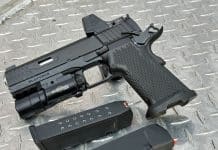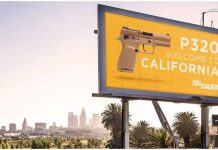A keystone of Thai naval power is the Naresuan-class guided missile frigate (FFG), which is a joint Thai-Chinese design based on—but more advanced than—the Chinese Type 053 frigate. Naresuan is named for a Thai king who liberated Siam (the ancient name for Thailand) from Burma in the 1500s; its sister ship Taksin is named for a former Thai prime minister.
The class lead was commissioned in January 1995; the Taksin followed in October 1995. The vessels are 394 feet in length with a beam of 43 feet, displace 2,900 tons, and carry a crew of 150. They are powered by two General Electric LM2500 gas turbines and two MTU 20V1163 TB83 diesel engines that generate a maximum speed of 32 knots and a cruising range of 4,000 nautical miles (4,600 statute miles) at 18 knots.
These frigates are armed with a mix of surface-to-surface and surface-to-air missiles, guns, and torpedoes. They carry two four-missile RGM-84 Harpoon anti-ship missile launchers and a Mark 41 vertical launch system (VLS) that can handle the Sea Sparrow and Evolved Sea Sparrow (ESSM) missiles, the latter weapon being capable of engaging supersonic-maneuvering anti-ship missiles traveling at Mach 4. The Naresuan and Taksin are also equipped with three gun mounts: a single Mark 45 Mod 2 127mm (5-inch) gun in a bow turret with a maximum range of 24 kilometers and a rate of fire of 16-20 rounds per minute, and two Type 76 twin 37mm dual-purpose anti-aircraft/anti-surface guns. Finally, the ships carry the Mark 32 Mod 5 torpedo launcher capable of launching Mark 46 or Mark 50 torpedoes for anti-submarine purposes.
Weapons systems mean little without appropriate sensor capabilities to back them up, and the Naresuan FFGs were originally equipped with surveillance, long-range air search, and fire control radar systems, along with the DE-1160 hull-mounted sonar. However, in June 2011 the Royal Thai Navy contracted with Saab to retrofit the 9LV Mark 4 combat management system, the CEROS 200 fire control system, and onboard data links to both vessels.
The 9LV system integrates the radar, gun, wind sensor, GPS, identification, friend or foe (IFF) receiver and data link systems to greatly automate the management of engagements. The CEROS 200 in combination with these systems enables the FFGs to engage sea-skimming missiles and small surface threats.
Finally, for search and rescue or anti-submarine warfare (ASW) purposes, the Naresuan-class ships have a stern helipad with hangar capacity for one helicopter, typically the Super Lynx or Bell 212 models.
These frigates have often operated in cooperation with U.S. Navy forces and represent a powerful addition to allied naval power in waters that contain some of the highest concentrations of merchant traffic anywhere in the world.













Taksin is named form Thai king too. not from prime minister.
http://en.wikipedia.org/wiki/Taksin
Comments are closed.